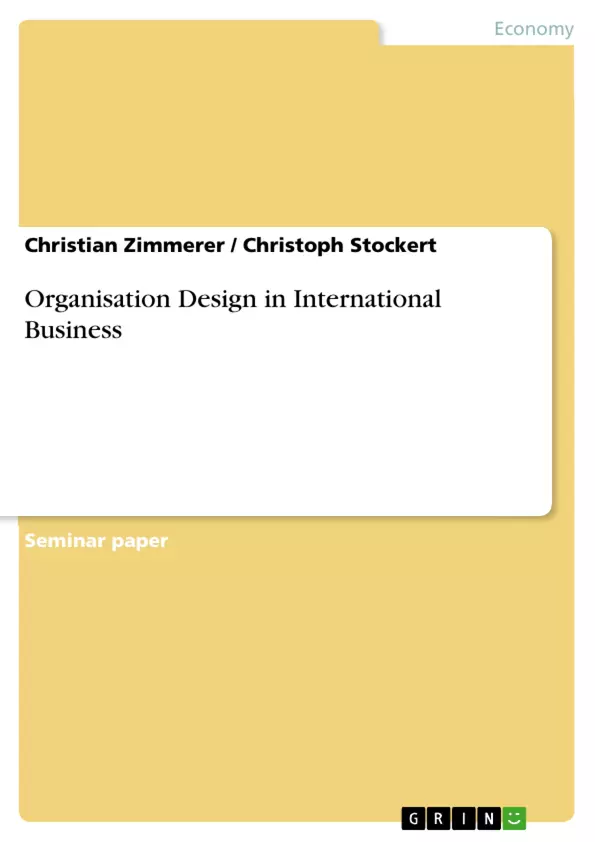In international business companies always have to take care about fast changing markets and customer needs. To be able to cope with these requirements the necessity of a perfect fitting organisational framework is
given.
Organisational strategy is one step to prepare a company for these needs. It allows the managers to prepare for different cases regarding product and globalisation issues.
Another important point is the choice of the organizational architecture. It supports the strategy of the organisation with different approaches. Structure, incentive and control systems, processes, culture, and people are the main areas of the organisational architecture. The right combination
of these factors helps to support the business success.
A lot of cultures developed their own successful organization types. They implement typical cultural elements of a certain region and combine it with their business activities. It helps to improve the business activities and become effective global players.
The topics mentioned above will be illustrated in the following chapters. They provide an overview of the main elements of organisation strategy and organisation architecture as well as some culture specific forms.
Inhaltsverzeichnis (Table of Contents)
- Introduction
- Organisation strategies
- Multidomestic companies
- International companies
- Global companies
- Transnational companies
- Organisational Architecture
- Organisational Structure
- Control systems and incentives
- Processes
- Organisational Culture
- Combining Strategy and Architecture in Organisations
- Organisation in culture
- Kereitsu
- Chaebol
- Family Business networks
- Kibbutz
- Conclusion
Zielsetzung und Themenschwerpunkte (Objectives and Key Themes)
This text provides an overview of key organizational strategies and architectural elements for businesses operating in the global market. The goal is to help readers understand how companies can adapt their organizational structures and practices to effectively address international business challenges and opportunities.
- Internationalization strategies for businesses
- The relationship between organizational structure and international business success
- The impact of cultural differences on organizational structures
- The importance of control systems and incentives in international organizations
- The role of organizational culture in promoting global business success
Zusammenfassung der Kapitel (Chapter Summaries)
- Introduction: The introductory chapter highlights the importance of adapting organizational structures and strategies to meet the ever-changing demands of international business. It introduces the concepts of organizational strategy and architecture, emphasizing their crucial role in achieving business success in a global environment.
- Organisation strategies: This chapter explores various organizational strategies companies employ as they expand their operations globally. It examines different models, such as multidomestic companies, international companies, global companies, and transnational companies, outlining the characteristics and advantages of each approach.
- Organisational Architecture: This chapter delves into the various components of organizational architecture, which are crucial for supporting the chosen strategy. It analyzes aspects like organizational structure, control systems and incentives, processes, and organizational culture, emphasizing their interconnectivity and significance in building a successful global business.
- Combining Strategy and Architecture in Organisations: This chapter emphasizes the crucial link between organizational strategy and architecture, highlighting the importance of aligning these two aspects to ensure effectiveness and efficiency. It explores how successful companies effectively integrate these elements to achieve global success.
- Organisation in culture: This chapter examines specific organizational models prevalent in different cultural contexts. It explores the characteristics of Kereitsu, Chaebol, Family Business networks, and Kibbutz, illustrating how cultural influences shape business structures and practices.
Schlüsselwörter (Keywords)
The text focuses on key concepts related to international business and organizational design, including internationalization strategies, organizational architecture, cultural influences, control systems, incentives, and organizational structures such as multidomestic, international, global, and transnational companies.
- Quote paper
- Christian Zimmerer (Author), Christoph Stockert (Author), 2010, Organisation Design in International Business, Munich, GRIN Verlag, https://www.grin.com/document/184777




